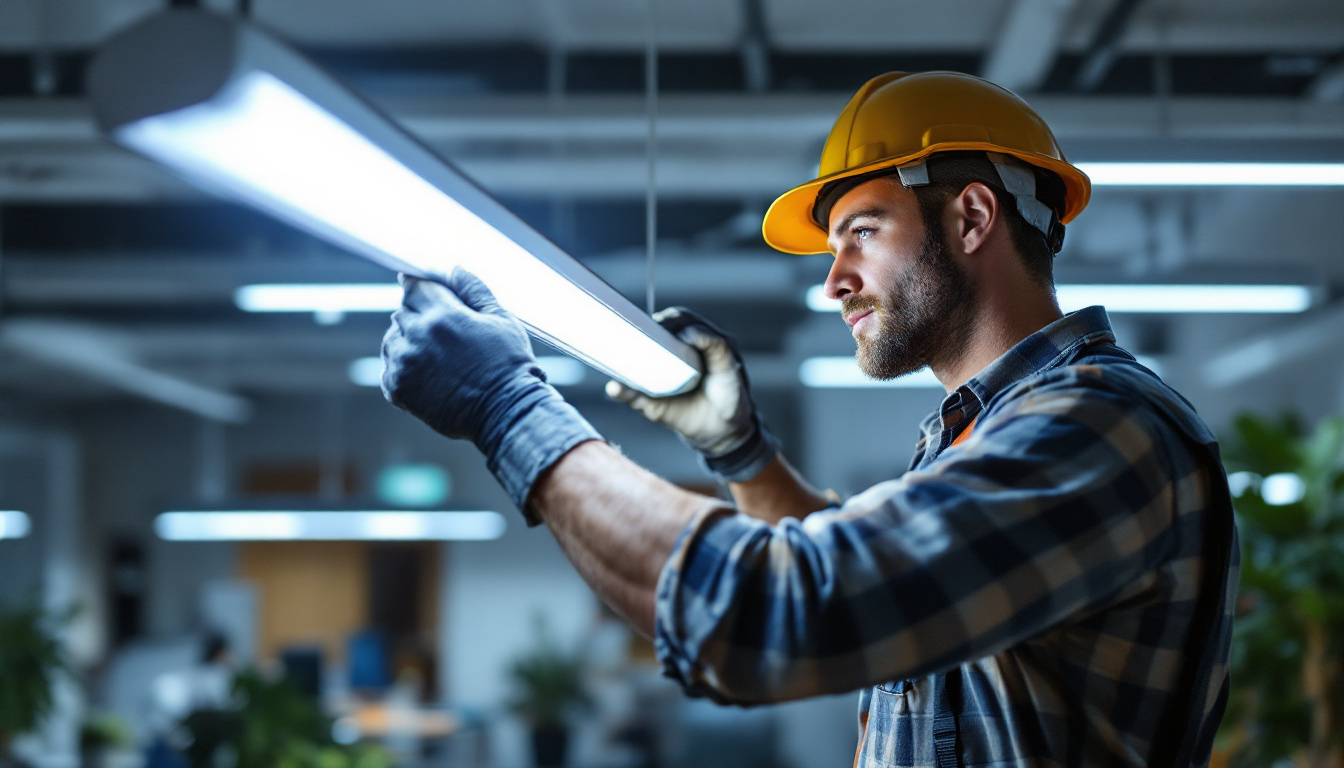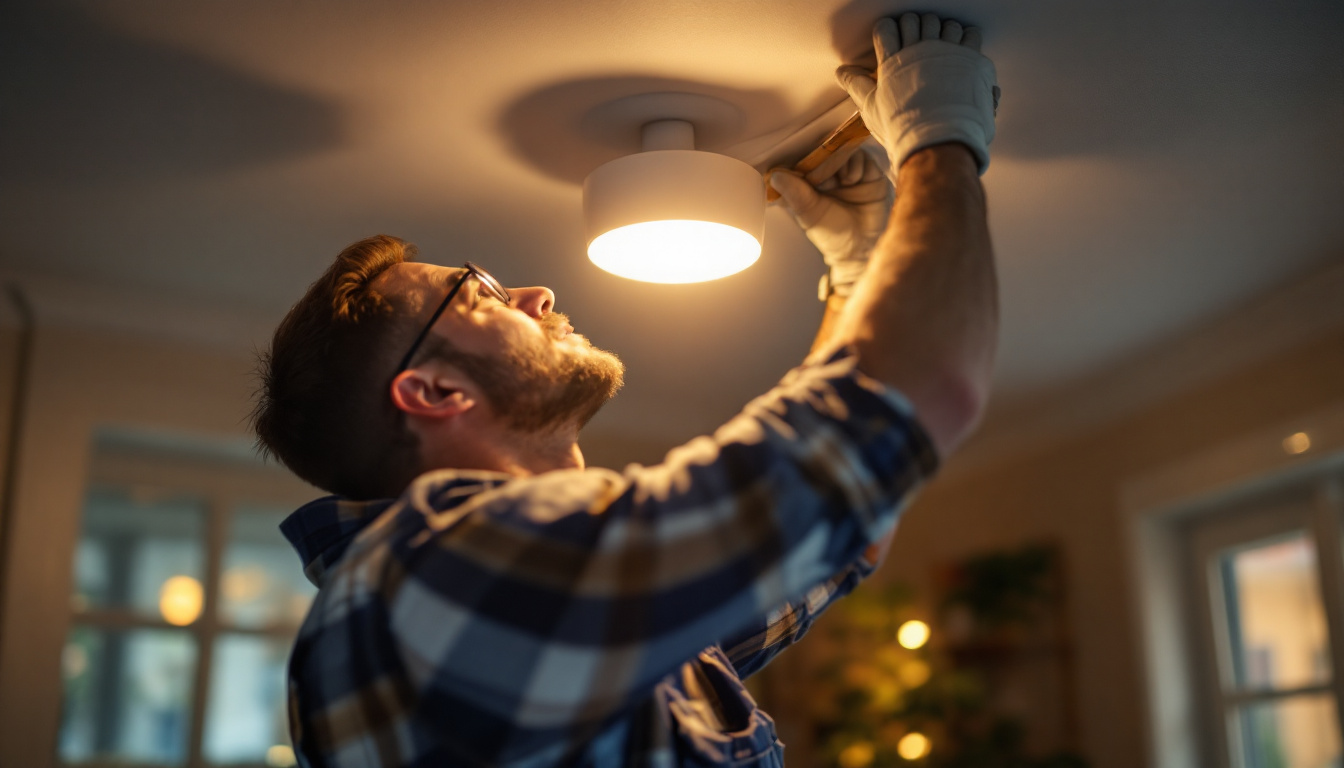
As the demand for sustainable agriculture continues to rise, hydroponic farming has emerged as a revolutionary method of food production. This innovative approach not only maximizes space and resources but also integrates advanced technologies, particularly in lighting solutions. For lighting contractors, understanding the role of hydro farms in modern lighting solutions is essential, as it opens up new avenues for collaboration, innovation, and growth.
Hydroponic farming is a method of growing plants without soil, using nutrient-rich water instead. This technique allows for greater control over the growing environment, leading to faster growth rates and higher yields. As urban areas expand and arable land decreases, hydroponics offers a viable solution to meet the increasing food demands of the population. Furthermore, this innovative approach can be particularly beneficial in regions with poor soil quality or extreme climates, where traditional farming may not be feasible. By utilizing hydroponics, farmers can cultivate a diverse array of crops, from leafy greens to fruiting plants, all while minimizing the environmental footprint.
The benefits of hydroponic farming are numerous. For one, it uses up to 90% less water than traditional farming methods, making it an environmentally friendly option. Additionally, hydroponics allows for year-round cultivation, independent of seasonal changes. This consistency can lead to a more reliable food supply and reduced reliance on imports. The ability to grow crops in controlled environments also means that farmers can minimize the use of pesticides and herbicides, resulting in cleaner produce and healthier ecosystems.
Moreover, hydroponic systems can be set up in various locations, including urban rooftops and indoor spaces, making them accessible to a wider audience. This flexibility not only supports local economies but also reduces transportation emissions associated with food distribution. As cities continue to grow, integrating hydroponic farms into urban planning can transform unused spaces into productive agricultural sites, fostering community engagement and promoting sustainable practices. Educational programs can also emerge from these initiatives, teaching urban dwellers about food production and the importance of sustainable living.
There are several types of hydroponic systems, each with its unique advantages and applications. Nutrient Film Technique (NFT), Deep Water Culture (DWC), and Ebb and Flow systems are among the most popular. Each system requires specific lighting solutions to optimize plant growth, making it crucial for lighting contractors to understand these needs. The choice of system often depends on the type of crops being grown, the available space, and the grower’s expertise.
For instance, NFT systems rely on a thin film of nutrient solution flowing over the roots, necessitating precise lighting to ensure photosynthesis occurs efficiently. Understanding these nuances allows lighting contractors to tailor their solutions to the specific requirements of each hydroponic setup. In addition to lighting, factors such as pH levels, nutrient concentrations, and air circulation play vital roles in the success of hydroponic farming. By monitoring and adjusting these variables, growers can create optimal conditions for plant health and productivity, ultimately leading to a more sustainable and efficient food production system. As technology advances, the integration of automation and smart sensors into hydroponic systems is becoming increasingly common, further enhancing the potential for innovation in this field.
Lighting plays a pivotal role in the success of hydroponic farming. Unlike traditional farming, where sunlight is the primary source of light, hydroponic systems often rely on artificial lighting to provide the necessary spectrum for plant growth. The right lighting can significantly enhance photosynthesis, leading to healthier plants and improved yields.
Several Types of Grow Lights are commonly used in hydroponic systems. LED lights, High-Intensity Discharge (HID) lights, and fluorescent lights each have their pros and cons. LEDs are particularly favored for their energy efficiency and longevity, while HID lights are known for their high output and effectiveness in larger setups.
Fluorescent lights, on the other hand, are often used in smaller systems or for seedlings due to their lower heat output and cost-effectiveness. Each lighting type requires careful consideration regarding placement, intensity, and duration to ensure optimal plant growth.
The spectrum of light is crucial in hydroponics. Plants require different wavelengths of light for various stages of growth. For instance, blue light promotes vegetative growth, while red light is essential for flowering and fruiting. Understanding these requirements allows lighting contractors to design systems that cater to the specific needs of the plants being cultivated.
Moreover, advancements in lighting technology have led to the development of full-spectrum lights that can mimic natural sunlight. These lights can be adjusted to provide the ideal spectrum for different plant species and growth stages, enhancing overall productivity in hydroponic farms.
As the world increasingly focuses on sustainability, energy efficiency in lighting solutions has become paramount. Hydro farms, by their very nature, are designed to minimize resource usage, making them an ideal candidate for energy-efficient lighting solutions.
LED lights have revolutionized the way hydroponic farms approach lighting. With significantly lower energy consumption compared to traditional lighting options, LEDs not only reduce operational costs but also lessen the environmental impact. Their long lifespan further contributes to sustainability, as fewer replacements are needed over time.
Additionally, LEDs emit less heat, which helps maintain optimal temperatures within the growing environment. This aspect is particularly important in hydroponic systems, where temperature control is critical for plant health. By integrating LED technology, hydro farms can create a more stable and efficient growing environment.
Incorporating smart technology into lighting solutions for hydroponics can further enhance efficiency and productivity. Smart lighting systems can be programmed to adjust according to the specific needs of the plants, taking into account factors such as growth stage, time of day, and environmental conditions.
For lighting contractors, offering Smart Lighting Solutions can set them apart in a competitive market. These systems not only optimize energy usage but also provide farmers with valuable data on plant growth and health, allowing for informed decision-making.
While hydroponic farming presents numerous opportunities for innovation in lighting solutions, it is not without its challenges. Understanding these challenges is essential for lighting contractors looking to enter or expand in this market.
One of the primary challenges in hydroponics is the initial investment required to set up a system. The cost of high-quality lighting solutions can be significant, which may deter some potential farmers. However, it is crucial to emphasize the long-term savings and benefits associated with energy-efficient lighting options.
Lighting contractors can play a vital role in helping farmers understand the return on investment (ROI) of high-quality lighting solutions. By providing detailed information on energy savings, increased yields, and overall productivity, contractors can help farmers make informed decisions that align with their financial goals.
Another consideration is the ongoing maintenance of lighting systems. Regular maintenance is essential to ensure that lighting solutions operate at peak efficiency. For lighting contractors, offering maintenance services can create an additional revenue stream while providing valuable support to hydroponic farmers.
Educating farmers on the importance of maintenance, such as cleaning fixtures and checking for bulb replacements, can enhance the longevity and effectiveness of lighting systems. This proactive approach not only benefits the farmer but also fosters a strong relationship between contractors and clients.
The future of hydro farms is bright, with ongoing advancements in technology and growing interest in sustainable agriculture. As more individuals and businesses recognize the benefits of hydroponics, the demand for innovative lighting solutions will continue to rise.
Emerging technologies, such as vertical farming and automated systems, are set to transform the hydroponic landscape. These innovations often require specialized lighting solutions that can adapt to unique growing environments. Lighting contractors who stay ahead of these trends will be well-positioned to meet the evolving needs of the market.
Additionally, research into plant biology and light interaction is continually expanding, providing new insights into how different light spectra can affect plant growth. This knowledge can lead to more tailored lighting solutions that optimize growth and yield.
Collaboration between lighting contractors and hydroponic farmers can lead to innovative solutions that benefit both parties. By working together, contractors can gain a deeper understanding of the specific lighting needs of different crops, while farmers can leverage the expertise of contractors to enhance their operations.
Networking within the hydroponic community can also open doors to new projects and partnerships. As the industry grows, the potential for collaboration will only increase, creating opportunities for lighting contractors to expand their reach and impact.
Hydro farms represent a significant advancement in modern agriculture, and lighting solutions play a crucial role in their success. For lighting contractors, understanding the unique requirements of hydroponic systems is essential for providing effective and efficient solutions. By embracing energy-efficient technologies, staying informed about industry trends, and fostering collaborative relationships, contractors can position themselves as leaders in this evolving market.
As the demand for sustainable food production continues to grow, the role of lighting in hydroponics will only become more prominent. By investing in knowledge and innovation, lighting contractors can contribute to a more sustainable future while enhancing their business prospects.
Ready to elevate your hydroponic farming with the best in lighting solutions? Look no further than LumenWholesale, where we specialize in providing contractors with top-quality, spec-grade lighting products at unbeatable wholesale prices. Our extensive selection is designed to meet the highest industry standards, ensuring that your hydro farms thrive with reliable, high-performance lighting. With free shipping on bulk purchases, you can access premium lighting at the best value — without hidden fees or compromises. Don’t let inflated markups dim your project’s potential. Choose LumenWholesale for the perfect blend of quality, affordability, and convenience. Wholesale Lighting at the Best Value is just a click away.

Discover how solar lamp post lights can revolutionize your lighting business.

Discover essential tips and innovative strategies for lighting contractors to master the art of fluorescent lighting.

Discover how dusk to dawn lighting fixtures can transform your spaces with seamless illumination.

Explore the advantages and drawbacks of GE Lights for lighting contractors in this insightful article.